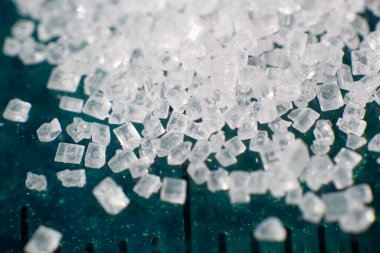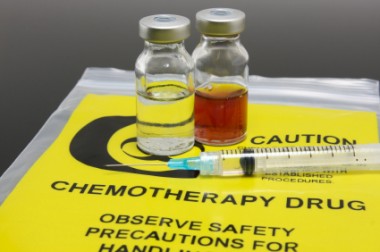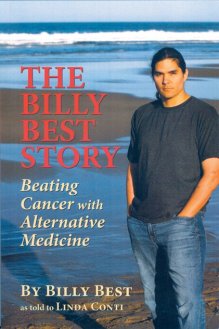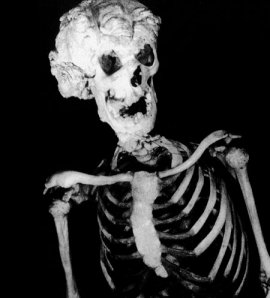Has Cancer Been Completely Misunderstood?
Mood:
 chatty
Topic: Cancer
chatty
Topic: Cancer
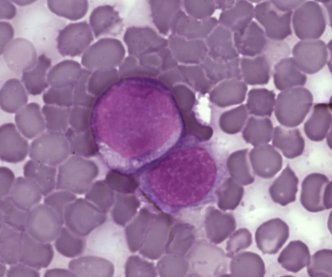
A Failed War On Cancer
Ever since Richard Nixon officially declared a war on cancer in 1971 through the signing of the National Cancer Act,[i] over a hundred billion dollars of taxpayer money has been spent on research and drug development in an attempt to eradicate the disease, with trillions more spent by the cancer patients themselves, but with disappointing results.
Even after four decades of waging full-scale “conventional” (surgery and chemo) and “nuclear” (radiotherapy) war against cancer, one in every four Americans will be diagnosed with the disease within their lifetimes – and this number is projected to grow – unabated — not unlike the process of cancer itself.
Could this colossal failure reflect how profoundly misunderstood the condition is, and misguided are our attempts to prevent and treat it?
The Question That Must Be Answered Anew: What Is Cancer?
Perhaps we need to return back to the fundamental question of ‘What Is Cancer’? After all, until we find an accurate answer to this question, all attempts to ‘prevent’ and ‘treat’ a disease we do not understand are doomed to fail.
For the past half century, the “Mutational Theory” has provided the prevailing explanation for the cause of cancer, where, as the story goes, accumulated mutations within our cells lead a few susceptible ones to “go berserk,” their “insane” and “violent” behavior a result of multiple destructive events to the intelligent code within the cell (DNA) that normally keep them acting in a ‘civilized’ manner relative to the larger multicellular community as a whole (i.e. the body). In this view, these rogue cells replicate incessantly and form a tumor which spreads outward in a cancerous manner (cancer = Greek for “crab”), in many ways simulating the characteristics of an infectious process within the host, until the growths obstruct vital processes, resulting in morbidity and death.
According to this theory, which was heavily influenced by the Darwinian theory of evolution and is sometimes called “Internal Darwinism,” what drives the evolution of the healthy cells into cancerous ones is a process very similar to natural selection, i.e. random mutations beneficial to the survival and reproduction of cancerous cells in a tumor are naturally selected for and conserved, driving them towards malignancy. Damage to the DNA can occur either through inheriting defective DNA sequences (“bad genes” in the family) or exposures to DNA-damaging chemicals (e.g. tobacco) or radiation.
While this view has some explanative value, it can also be quite misleading. For instance, a fundamental tenet of evolution is that random mutations are almost always harmful, resulting in immediate cell death. Cancer cells, however, seem to get quite ‘lucky’ because they appear to thrive on them. Rather than dying like normal cells when faced with random mutations, they exhibit the exact opposite response: they become immortalized, incapable of undergoing the programmed cell death required of healthy cells.
Is randomness and chaos, then, really at the root of the transformation of healthy cells into cancer?
Tumors, after all, express highly organized behaviors, seemingly impossible to induce through strictly random forces such as mutation…
A collection of cancer cells (tumors), for instance, are capable of building their own blood supply (angiogenesis), are able to defend themselves by silencing cancer-suppression genes and activating tumor-promoter genes, secreting corrosive enzymes to move freely throughout the body, alter their metabolism to live in low oxygen, high sugar and acidic environments, and know how to remove their own surface-receptor proteins to escape detection by white blood cells. Could these complex behaviors really be a result of random mutations? And is it possible that random mutations could result in the formation of the same “lucky” set of genetic properties, each and every time a new cancer forms in a human?
Random mutations, no doubt, play a major role in the initiation and promotion of cancer, but are not alone sufficient for a complete explanation. One group of scientists, in fact, have offered a much more compelling explanation. They view multiple mutations causing an unmasking of an ancient survival program within the cell….
Cancer as An Ancient Survival Program Unmasked
A brilliant new theory, introduced by Arizona State University scientist, Paul Davies, and Australian National University scientist, Charles Lineweaver, sheds much needed light on the true nature of cancer. According to Davies:
“Cancer is not a random bunch of selfish rogue cells behaving badly, but a highly-efficient pre-programmed response to stress, honed by a long period of evolution.”
In their seminal paper, titled “Cancer tumors as Metazoa 1.0: tapping genes of ancient ancestors,” Davies and Lineweaver propose that cancer is an evolutionary throw-back, drawing from a genetic ‘tool-kit’ at least a billion years old, and which still lies buried – normally dormant – deep within the genome of our cells. Davies calls this subterranean genetic layer Metazoa 1.0, and it contains pathways and programs that were once indispensable for our ancient cellular predecessors and their early proto-communities to survive in a radically different environment.
Without the highly differentiated cells and specialized organs of higher multicellular/animal life (Metazoa 2.0), cells with the genetics of Metazoa 1.0 would have favored traits that enabled them to survive direct contact with what was a much different and harsher (to us) environment.
For example, 1 billion years ago atmospheric oxygen was exceptionally low, since photosynthesis has not yet evolved to produce an abundant supply. This means that cellular life at that time would have had to learn to thrive in a low or no oxygen environment, which is exactly what cancer cells do, using aerobic glycolysis for energy instead of oxidative phosphorylation.
Davies and Lineweaver summarize their view as follows
“The genes of cellular cooperation that evolved with multicellularity [animal life] about a billion years ago are the same genes that malfunction to cause cancer. We hypothesize that cancer is an atavistic condition that occurs when genetic or epigenetic malfunction unlocks an ancient ‘toolkit’ of pre-existing adaptations, re-establishing the dominance of an earlier layer of genes that controlled loose-knit colonies of only partially differentiated cells, similar to tumors. The existence of such a toolkit implies that the progress of the neoplasm [cancer] in the host organism differs distinctively from normal Darwinian evolution.”
Instead of viewing the hallmark trait of cancer, namely, incessant proliferation, as a newly evolved trait spurned by random mutations, it would be considered the default state of the cell, having been developed a billion years ago when ‘not dying’ would be the first priority. Remember, this ancestral assemblage of cells would not have had the differentiation of cell type and specialization of tissue associated with higher animals, i.e. skin, hair, claws, etc., with which to protect themselves against the environment.
Damage to the skin in animals, for instance, results in the rapid death and sloughing off these ‘extra’ cells, to be replaced by new healthy ones. A still barely multicellular entity would not have this luxury, and would entrench itself within genetic traits associated with resilience, the ability to resist all manner of environmental assault, and would express a highly ‘selfish’ form of behavior we now consider a fundamental property of cancer.
If cancer is an ancient survival program unmasked, this does not mean that the “Mutation Theory” does not still hold some truth. Genetic damage and mutations do in fact contribute to cancer, but rather than view them as ‘causing’ the complex set of behaviors associated with cancer, they unmask an already existent set of genetic programs [atavism].* For instance, there are over 100 oncogenes known to exist within our DNA and are shared by a vast array of different species including the fruit fly, indicating how ancient (at least 600 million years old) and universal they are (found in most multicellular organisms).
Numerous studies confirm that dinosaurs had tumors. These cancer-promoting genes are normally suppressed by more recently evolved genes (Metazoa 2.0), such as tumor-suppressor genes, but when enough damage to the more recently evolved genetic overlay occurs, the system goes into “Safe Mode” and the older genetic pathways (Metazoa 1.0) are activated once more.
Within the horizon of this new way of thinking, cancer can no longer be viewed as some predestined gene-time bomb setting itself off within us, nor simply a byproduct of cumulative exposures to genotoxic substances, alone. Rather, cancer is an ancient survival response to an increasingly toxic environment, and an increasingly unnatural diet and compromised immune function. These cells have learned to survive the constant abuse, and have flipped into survival mode, which is self-centered, hyper-proliferative (constant self-repair/replication) and aggressive (metastatic), i.e. what does not kill you makes you stronger
Cancer As Something Our Body Does To Survive
Cancer can no longer be viewed as something bad that happens to an intrinsically healthy body. Rather, cancer is something the body actively does in response to an intrinsically unhealthy cellular, bodily and planetary environment. Instead of an expression of bodily deviance, it may be expressive of bodily intelligence, and the capability of our cells to survive in conditions that threaten to destroy cells beyond the critical threshold beyond which survival is impossible.
This perspective also sheds much needed light on the devastating nature of chemotherapy and radiotherapy. Tumors contain a broad range of cells, many of which are intrinsically benign (will never become malignant or cause damage to the organism) and some of which keep more malignant populations in check.
The invasive cells are more primordial in their genetic configuration (Metazoa 1.0) due to just how much shock/damage/poisoning they have been made to endure during their life cycles. It is exactly these cells, therefore, that are MOST resistant to the chemo, and less likely to die when exposed to it. The chemotherapy and radiation, therefore, actually kill the very cells that do not represent a threat, and select for more invasive ones.
This explains why at first the introduction of chemotherapy/radiation may cause tumor regression, but the small population that survives (including cancer stem cells) technically comes back even stronger thereafter. In the same way that antibiotics like methicillin spawned the monster that is methicillin-resistant Staphyloccocus aeureus, which creates a population of bacteria with highly up-regulated multidrug resistance proteins and genes, chemotherapy and radiation CREATE a genetically more resistant population of super-cancers, and often is the reason why the patient dies. Sadly, in these cases the death is blamed on the “chemoresistant” and “radioresistant” cancer and the victim is blamed, if you will, for being killed by the very treatment they were being told they would die much sooner without.
Cancer Is “A Symptom” And Not A “Disease.”
So, instead of a monolithic “disease,” it makes more sense to view cancer as a symptom of cellular and environmental conditions gone awry; in other words, the environment of the cell has become inhospitable to normal cell function, and in order to survive, the cell undergoes profound genetic changes, drawing ancient genetic pathways which we associate with the cancerous personality ( phenotype). This “ecological” view puts the center of focus back on the preventable and treatable causes of the “disease,” rather on some vague and out-dated concept of “defective genes” beyond our ability influence directly.
It also explains how the “disease” process may conceal an inherent logic, if not also healing impulse, insofar as it is an attempt of the body to find balance and survive in inherently unbalanced and dangerous conditions. Fundamentally, we need to shift our thinking away from the view that cancer is something unnatural that happens to us, to one where we see that cancer is something natural our body does to survive unnatural conditions. Change and improve those conditions, and you do more to change cancer than attacking it as if you were fighting a war against an enemy.
*Additional explanation of the cancer-atavism theory
*The concept of cancer-as-atavism can be explained this way: An atavism is an older genetic trait that is no longer used, and therefore suppressed by newly evolved genes. An example is webbed feet. Everyone in the womb has them, but as embryogenesis proceeds genetic sequences kick in that cause them to disappear. This is done through a process of ‘programmed cell death,’ also known as apoptosis. The body simply turns on the apoptosis genes in the tissue associated with webbing between the toes, and those cells peacefully disassemble themselves, resulting in normal web-free hands and feet. Now the interesting thing is that cancer cells ARE cancerous because they DO NOT DIE.
They have either forgotten how to undergo programmed cell death (apoptosis), or, have been forced through injury (genetic damage) or environmental pressures (epigenetic changes) to suppress the genes that enable them to die. The cancer cells, in effect, draw from an ancient genetic tool kit which its predecessors over a billion years ago used to survive what was at the time a very harsh environment, and where replicating was a much more preferred trait than dying, and where cells had yet formed highly evolved multicellular communities found within animals.
About the Author
Sayer Ji is the founder and chair of GreenMedInfo.com. His writings have been published in the Wellbeing Journal, the Journal of Gluten Sensitivity, and have been featured on numerous websites, including Mercola.com, NaturalNews.com, Infowars.com, Care2.com. His critically acclaimed essay series The Dark Side of Wheat opens up a new perspective on the universal, human-species specific toxicity of wheat, and is now available for PDF download.
Source - http://wakingtimes.com
Posted by Neil Bartlett DHyp M.A.E.P.H
at 00:01 CET
Updated: Friday, 28 February 2014 01:04 CET



